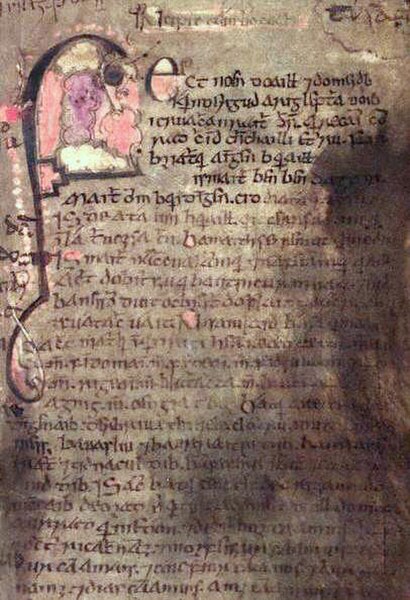Lugh or Lug is a figure in Irish mythology. A member of the Tuatha Dé Danann, a group of supernatural beings, Lugh is portrayed as a warrior, a king, a master craftsman and a saviour. He is associated with skill and mastery in multiple disciplines, including the arts. Lugh also has associations with oaths, truth and the law, and therefore with rightful kingship. Lugh is linked with the harvest festival of Lughnasadh, which bears his name. His most common epithets are Lámfada and Samildánach. This has sometimes been anglicised as "Lewy of the Long Hand".
Relief of a three-faced god from northeastern Gaul believed to be Lugus, the Gaulish equivalent of Lugh
Lugh's bloodthirsty magical spear, described in Charles Squire's popular book (1905).—illustration by H. R. Millar
Irish mythology is the body of myths indigenous to the island of Ireland. It was originally passed down orally in the prehistoric era. In the early medieval era, some myths were transcribed by Christian monks, who heavily altered and Christianised the myths. Irish mythology is the best-preserved branch of Celtic mythology.
Riders of the Sidhe, a 1911 painting of the aos sí or Otherworldly people of the mounds, by the artist John Duncan
Cuchulain in Battle by Joseph Christian Leyendecker, 1911
The Fomorians, as depicted by John Duncan (1912)
Folio 53 of the Book of Leinster. Medieval manuscripts are the main source for Irish mythology and early literature.






